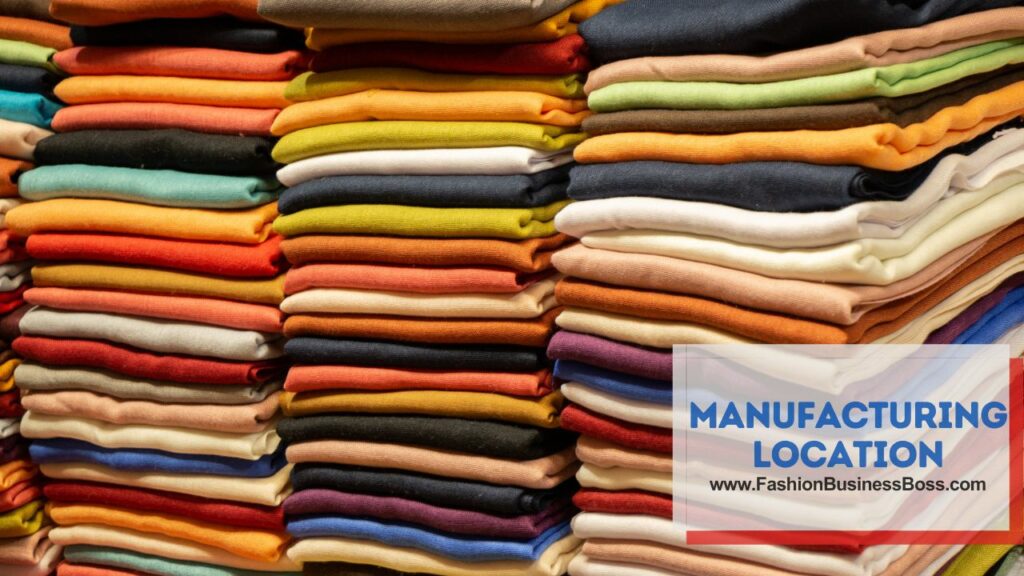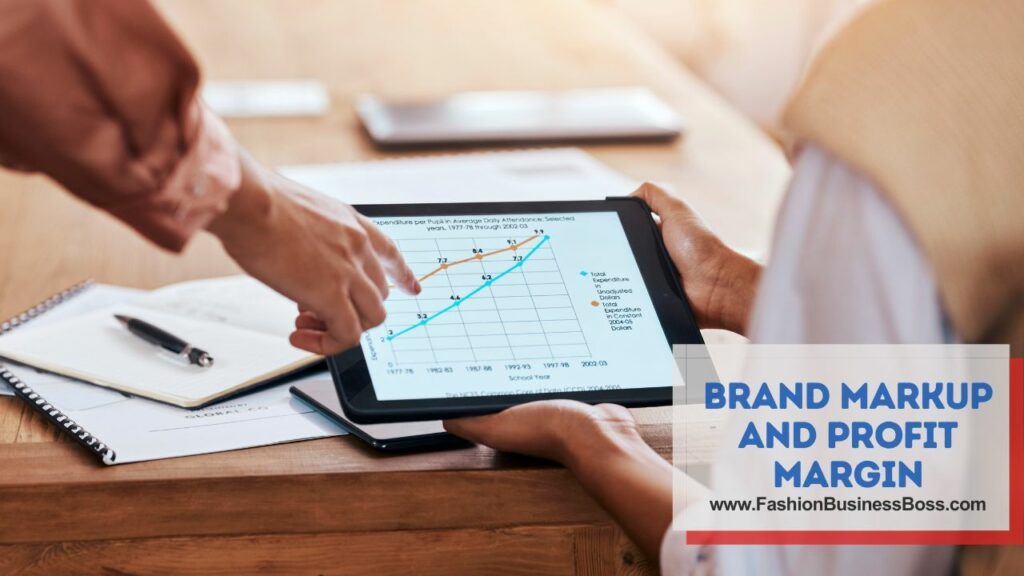When it comes to the fashion industry, every exquisite piece of clothing you see on the rack or online store has a unique story to tell. Behind the scenes, a complex journey unfolds, involving numerous factors that determine the final price tag.
To manufacture clothing, costs vary significantly. Factors like fabric choice, labor, location, and design complexity all influence the final price tag. Understanding these factors is key for budgeting in the fashion industry.
In this article, we’ll delve into the intricacies of clothing manufacturing costs to help you understand the key components that contribute to the overall expense.
Fabric Selection

Fabric selection is a crucial element when determining how much it costs to manufacture clothing. The type of fabric you choose significantly affects the overall expense. Fabrics can be expensive or less costly, depending on their characteristics. For instance, materials such as silk, cashmere, and high-end organic cotton are generally more expensive due to their quality and uniqueness.
The quality of the fabric also matters; higher quality fabrics often come with a higher price tag. Where the fabric comes from and its availability can impact the cost. Fabrics sourced from specific regions or those that are rare and harder to find tend to be pricier.
To put it simply, when you opt for luxurious or rare fabrics, you can expect a higher cost in your clothing manufacturing process. Conversely, if you choose more common and less premium materials, your manufacturing cost estimation will be lower. Careful consideration of fabric choice is essential for managing expenses in clothing production.
Read more about: Your Fashion Empire Begins: Opening a Clothing Boutique
Labor Costs
When it comes to manufacturing clothing, labor costs are a crucial factor to consider. These costs encompass the wages paid to the skilled workers who bring your clothing designs to life, as well as any additional benefits they receive.
For cost estimation, it’s essential to recognize that the skill level of these workers plays a significant role. Highly skilled artisans, with their expertise, may command higher compensation, which can increase the overall labor cost. Conversely, less skilled workers may have lower wage expectations, resulting in reduced labor expenses.
Furthermore, the geographical location of your manufacturing facility can have a substantial impact on labor costs. Labor rates can vary significantly between regions and countries. Some areas offer more competitive wages, while others have higher labor costs.
Labor costs can account for a significant portion of your clothing manufacturing expenses, potentially ranging from 20% to 40% or more of the total cost, depending on factors like worker skill levels and location. Understanding these variables is crucial for estimating and managing the cost of producing clothing.
Design and Development
Before the first stitch is made on a piece of clothing, there’s a crucial phase that sets the foundation for the entire manufacturing process: design and development. This initial stage involves various creative and technical aspects that contribute to the overall cost of producing clothing.
1. Conceptualization: The journey begins with conceptualizing the clothing. Designers brainstorm ideas, themes, and styles that will shape the final product. This phase requires creativity and vision.
2. Pattern Creation: Once the concept is solidified, patterns are created. Patterns serve as the templates for cutting and sewing the fabric. Designers and pattern makers collaborate to bring these blueprints to life.
3. Prototyping: Making prototypes is a crucial step to test the design and fit. Prototypes are like dress rehearsals for your clothing, ensuring that everything aligns with the vision and practicality.
4. Designers: The creative minds behind the clothing concept play a central role in the design and development phase. Their expertise and ideas shape the entire process.
5. Pattern Makers: These skilled individuals translate the design into precise patterns that guide the cutting and sewing of the fabric.
6. Sample Development: Creating samples helps refine the design and identify any necessary adjustments. It’s an iterative process that ensures the final product meets expectations.
In terms of cost, the design and development phase can vary widely depending on the complexity of the clothing and the expertise of the team involved. It’s challenging to provide a specific cost estimation as it can range from a few hundred dollars for simple designs to several thousand dollars for intricate and elaborate creations.
Manufacturing Location

The geographical location of your manufacturing facility is a key determinant of clothing production costs. Different countries and regions offer varying cost advantages due to disparities in labor expenses and overhead costs.
Countries like Bangladesh or Vietnam are known for their lower labor costs. In these regions, workers typically earn significantly lower wages compared to countries like the United States or Western Europe. This can result in labor cost savings of approximately 30% to 50% or more.
Overhead costs encompass various expenses such as rent for the manufacturing facility, utilities, insurance, and administrative costs. Countries with lower living costs and less regulatory burden tend to have lower overhead expenses, further contributing to cost savings.
Read more about: Your Fashion Journey: Creating Your Own Brand
Quantity Produced
The quantity of clothing items you produce plays a significant role in determining manufacturing costs. This concept is known as “economies of scale.” Essentially, it means that as you produce more items, the cost per unit tends to decrease.
When you manufacture a larger quantity of clothing, fixed expenses, such as machinery maintenance and facility costs, get spread out across more items. This distribution reduces the cost per unit. In simpler terms, making more clothing pieces in a single production run can be more cost-effective.
To provide a cost estimation, let’s consider an example. Suppose you’re producing 1,000 units of a particular clothing item. Your fixed expenses, let’s say, are $10,000. In this case, the fixed cost per unit would be $10,000 divided by 1,000, which equals $10. Now, if you were to produce 5,000 units of the same item with the same fixed cost, the fixed cost per unit would decrease to $2 ($10,000 divided by 5,000).
Equipment and Technology
The machinery and technology employed in the manufacturing process have a direct impact on production costs. While advanced equipment can enhance efficiency, it’s important to consider that it often necessitates a significant upfront investment.
Machinery and Equipment: Up-to-date machinery and equipment can streamline the manufacturing process, increasing productivity and potentially reducing labor costs. However, acquiring and maintaining such machinery can be expensive.
Cost Estimation: To offer a cost estimation, let’s take an example. Imagine you’re considering upgrading your sewing machines to more advanced models. A basic sewing machine may cost around $300, while a high-end industrial machine with advanced features can cost upwards of $1,500. While the initial investment for advanced machinery is higher, it can lead to long-term cost savings through increased efficiency and reduced labor expenses.
Overhead Expenses

Overhead expenses encompass various indirect costs associated with running a clothing manufacturing facility. These expenses include rent for the manufacturing facility, utility bills, insurance premiums, and administrative costs. While they may not be directly tied to the production process, these expenses contribute to the overall manufacturing cost.
To provide a cost estimation, let’s consider a simplified example. Suppose your monthly overhead expenses, including rent, utilities, insurance, and administrative costs, amount to $5,000. If you produce 1,000 clothing items in that month, your overhead cost per unit would be $5,000 divided by 1,000, which equals $5. This means that, besides the direct costs of materials and labor, you would need to allocate an extra $5 per clothing item to cover overhead expenses.
Read more about: Your Modest Clothing Line: Making It Happen
Shipping and Transportation
After the clothing is manufactured, it must reach its intended destination. Shipping and transportation costs play a vital role in this process. The expenses associated with shipping can fluctuate based on factors like the distance to the destination, the chosen shipping method, and the volume of clothing being transported.
The distance the clothing needs to travel has a direct impact on shipping costs. Longer distances typically result in higher transportation expenses due to fuel and time requirements.
Different shipping methods, such as air, sea, or land transportation, come with varying costs. Airfreight is generally faster but more expensive than sea or land transport.
The volume of clothing being shipped can affect costs as well. Shipping in larger quantities can sometimes lead to cost savings per unit, as bulk shipping may be more efficient.
To provide a cost estimation, let’s consider a simple example. Shipping 1,000 clothing items by air from one country to another might cost around $5 per item, resulting in an additional $5,000 in expenses.
Quality Control
In clothing manufacturing, maintaining high-quality standards is paramount. This involves implementing inspections and quality control measures throughout the manufacturing process to ensure that the final products meet desired standards. These measures come with their own costs that are integral to the manufacturing process.
To provide a cost estimation, let’s consider a simplified example. Suppose you produce 1,000 clothing items, and you decide to conduct quality control inspections on 10% of the items. If each inspection costs $10, the total quality control cost for this production run would be $100 (10% of 1,000 items times $10 per inspection).
Brand Markup and Profit Margin

At the peak of the clothing manufacturing process, brands apply a markup to the production cost. This markup serves to cover the brand’s own expenses and generate a profit. The chosen profit margin plays a significant role in determining the final retail price of the clothing.
The markup is the additional amount added to the production cost to account for brand expenses and profit. For instance, if your clothing item’s production cost is $20, and you apply a 50% markup, the final retail price would be $30 ($20 production cost plus $10 markup).
The profit margin is the percentage of profit you aim to achieve. In the example mentioned earlier, the 50% markup resulted in a profit margin of 33.33% (profit of $10 divided by the final price of $30).
To provide a cost estimation, let’s say you want to achieve a profit margin of 40% on a clothing item with a production cost of $25. In this case, the markup needed to reach your profit margin goal would be $10 ($25 production cost times 40% profit margin). So, the final retail price would be $35 ($25 production cost plus $10 markup).
Read more about: Your Virtual Sewing Studio: Making Clothes Online
Conclusion
In the intricate world of clothing manufacturing, costs are like threads intricately woven together to create the final product. Fabric selection, labor, design, location, quantity, equipment, overheads, transportation, quality control, and profit margins all play pivotal roles in determining the overall cost.
Understanding these factors is essential for both established fashion brands and aspiring designers looking to create their clothing lines. It enables informed decision-making and the ability to find a balance between quality and affordability.
Frequently Asked Questions

Q: What are the primary factors that impact clothing manufacturing costs?
A: The key factors include fabric selection, labor expenses, design and development, manufacturing location, and the quantity of clothing produced.
Q: How does the choice of fabric influence manufacturing costs?
A: Fabric choice affects costs due to variations in material price, quality, and availability. High-end materials like silk can significantly raise expenses.
Q: Does the location of the manufacturing facility affect costs?
A: Yes, the location plays a significant role. Countries with lower labor and overhead costs often offer more competitive pricing than higher-cost regions.
Q: Are there economies of scale in clothing manufacturing?
A: Yes, larger production runs tend to reduce the cost per unit, as fixed expenses can be spread across more items. Smaller batches may have a higher per-unit cost.
Q: How can brands balance quality and affordability in clothing manufacturing?
A: Brands can strike this balance by carefully considering factors like fabric, design complexity, and profit margin, ensuring they meet customer expectations while remaining competitive in the market.
To learn more about starting your own clothing business, check out my startup documents here.
The information provided by FashionBusinessBoss.com (“The Site”) is for general informational purposes only. All information on the Site is provided in good faith, however, we make no representation or warranty of any kind, express or implied, regarding the accuracy, adequacy, validity, reliability, availability or completeness of any information on the Site. Under no circumstance shall we have any liability to you for any loss or damage of any kind incurred as a result of the use of the Site or Reliance on any information provided on the Site. Your use of the Site and your reliance on any information on the Site is solely at your own risk. This blog post is for educational purposes only and does not constitute legal advice. Please consult a legal expert to address your specific needs. Terms and Conditions. (https://fashionbusinessboss.com/terms-and-conditions/)

Meet Shawn Chun: Entrepreneur and Fashion Business Fan.
I’m a happy individual who happens to be an entrepreneur. I have owned several types of businesses in my life from a coffee shop to an import and export business to an online review business plus a few more and now I create online resources for those interested in starting new ventures. It’s demanding work but I love it. I do it for those passionate about their business and their goals. That’s why when I meet a designer or boutique owner at a craft fair, farmers market, retail location or anywhere else I see myself. I know how hard the struggle is to retain clients, find good employees and keep the business growing all while trying to stay competitive.
That’s why I created Fashion Business Boss: I want to help fashion business owners like you build a thriving business that brings you endless joy and supports your ideal lifestyle.

